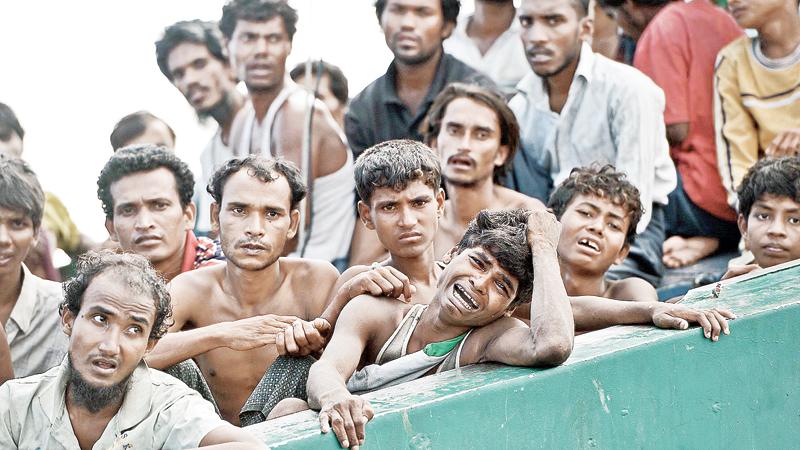
Despite the existing legal apparatus, human trafficking has remained an unresolved issue locally and internationally. For decades, trafficking of persons had been a consistently growing international concern addressed extensively at both international and national levels.
Accelerated by the increasing rates of the business, continually improving legal measures and safeguards have been adopted to resolve the situation.
Identification
To identify a gamut of issues surrounding human trafficking in Sri Lanka, one needs to first have a closer look at the definition of human trafficking broadly accepted by an internationally recognised authoritative legal entity. Article 3 of the Protocol to Prevent, Suppress and Punish Trafficking in Persons, one of the major instruments concerning Trafficking in Persons defines Trafficking in Persons as ‘the recruitment, transportation, transfer, harbouring or receipt of persons by means of threat or use of force or other forms of coercion, of abduction, of fraud, of deception, of abuse of power or of a position of vulnerability or of the giving or receiving of payments or benefits to achieve the consent of a person having control over another person for the purpose of exploitation.’
Trafficking in persons commonly take the forms of sea trafficking, forced labour and debt bondage.
 Given the very nature of its conduct, it had been identified as a crime and violation of human rights. In pursuance of this identification and led by the terms of the Protocol trafficking in persons have been criminalised in various domestic legislations.
Given the very nature of its conduct, it had been identified as a crime and violation of human rights. In pursuance of this identification and led by the terms of the Protocol trafficking in persons have been criminalised in various domestic legislations.
Sri Lanka recognises trafficking of persons as a criminal offence under the Convention on Preventing and Combating Trafficking in Women and Children for Prostitution Act No. 30 of 2005 and the Penal Code (Amendment Act No. 16 of 2006).
Protocols
The United Nations Office on Drugs and Crime (UNODC) in its creation of the United Nations Convention against Transnational Organised Crime and the two related Protocols namely, the United Nations Protocol to Prevent, Suppress and Punish Trafficking in Persons, Especially Women and Children, and the United Nations Protocol against the Smuggling of Migrants by Land, Sea and Air, laid the foundation to the international and local schemes of resolutions to counter the issue. In 2013, the United Nations adopted a resolution which marked July 30 as the World Day against Trafficking of Persons. The International Labour Organization (ILO) has been serving its best to address the matter of forced labour.
At a local level, with the assistance of the International Organization for Migration (IOM), a National Resource Centre to counter human trafficking was opened by the Immigration and Emigration Department of Sri Lanka (IED) in 2009, which strengthened the Government in its efforts to curb the issue. Sri Lanka also has a national anti-human trafficking task force led by the Ministry of Justice. A larger number of trafficking in persons has been recorded with regard to migration of workers in comparison to the activity demonstrated in other forms of trafficking. Sri Lanka dominates an unhealthy culture of uninformed and ill-prepared migration which increasingly creates vulnerability towards exploitation by human traffickers, from which a larger proportion of Sri Lanka’s labour force is continuously affected.
Reality
We are confronted by a reality where cases and prosecutions in this regard have consumed longer periods to be heard in court. While there had been more convictions of traffickers, the levels of prosecutions have been reported to be significantly lower.
The unavailability of data of victims and traffickers has greatly discouraged a positive response being made.
These have collectively counted towards producing a comparatively negative outcome.
Accordingly, a progression may only be witnessed if these situations have been countermanded and replaced with the positive, expedited hearing of cases, new additions and changes to policy and proper monitoring equipment to follow up the process.
